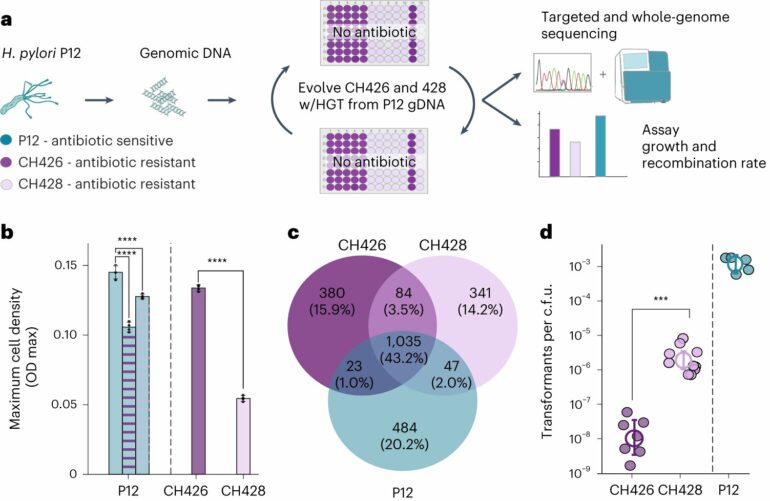In a scientific breakthrough, Monash University researchers have discovered a revolutionary “U-turn” in the evolution of antibiotic resistance, challenging the widely accepted notion that traits once developed are irreversible.
The finding, published in Nature Ecology & Evolution has far-reaching implications for the battle against antibiotic resistance, a global health crisis threatening the efficacy of medications.
Dollo’s Law, considered a fundamental principle in evolutionary biology, posits that traits, once lost, cannot be regained.
“Our study challenges this idea by uncovering the first-known example of molecular reverse evolution in antibiotic resistance,” said the study’s lead author, Associate Professor Mike McDonald, from the Monash University School of Biological Sciences.
The study explores the potential of undoing detrimental traits, such as antibiotic resistance, through a mechanism called horizontal gene transfer (HGT).
The bacterium Helicobacter pylori was the focal point of the experiment due to its capacity to exchange DNA by HGT. The research team tracked and sequenced genetic alterations in real-time across independent bacterial populations.
In some of these groups, they found the antibiotic-resistant gene variant reverted to its sensitive original form, marking a groundbreaking discovery in the realm of evolutionary biology.
“Imagine a scenario where infections lose their damaging characteristics, like antibiotic resistance, effectively returning to their original state,” said Associate Professor McDonald.
“This research opens up new possibilities in our fight against antibiotic resistance, and reinforces the importance of responsible antibiotic stewardship our approach to antibiotic and insecticide stewardship.”
The study also sheds light on the role of recombination, the shuffling and exchanging of genetic material, in facilitating this evolutionary U-turn. Populations with lower rates of recombination evolved a hyper-recombination phenotype, speeding up the rate at which bacteria exchange DNA, and reversed antibiotic resistance.
To further understand the dynamics of natural selection and HGT, the researchers constructed a population genetic model. Mathematical simulations revealed that while the costs of resistance are substantial, a moderate to high levels of HGT could make populations that were resistant to antibiotics, susceptible again.
The study challenges the conventional wisdom surrounding irreversible traits and presents a new avenue for combating antibiotic resistance.
“This research could redefine our strategies against antibiotic resistance, offering hope for a future where we can mitigate the spread of detrimental traits and potentially restore the effectiveness of anti-microbial drugs,” Associate Professor McDonald said.
More information:
An N. T. Nguyen et al, Horizontal gene transfer facilitates the molecular reverse-evolution of antibiotic sensitivity in experimental populations of H. pylori, Nature Ecology & Evolution (2024). DOI: 10.1038/s41559-023-02269-5
Citation:
Evolutionary ‘U-turn’ may mitigate antibiotic resistance, study finds (2024, January 5)



